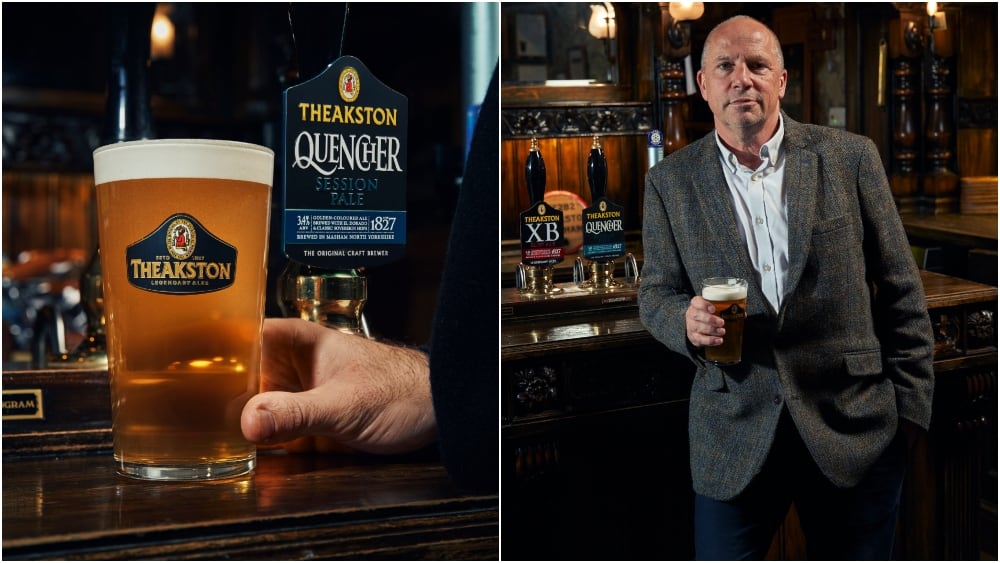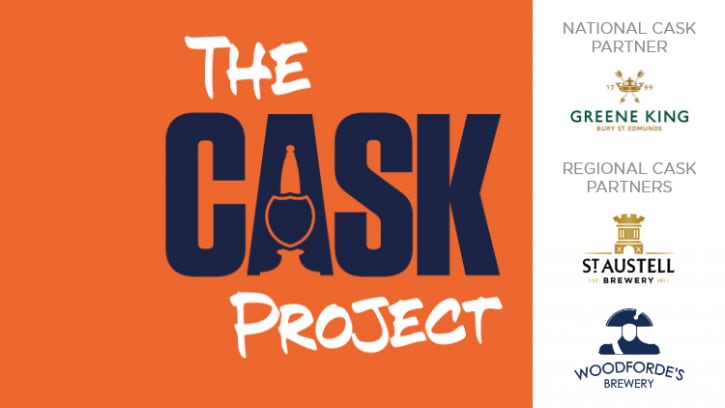For both food-led and wet-led pubs and bars, especially in rural areas, cask remains a vital part of the pub offering. While craft beer created a lot of noise over the past decade, for many pubs, cask is a more important category because it remains the constant icon and acts as a key differentiator in today’s market.
With cask being one of the freshest products in a pub and which requires a degree of skill to maintain, it has become a natural mark of quality and the critical factor as to whether a pub is good or great.
So, as the price of a pint has risen, consumers quite rightly expect to get what they pay for in terms of a quality product and are making their pub choice based on this, with the traditional handpull pump on the bar providing that additional reassurance.

The cask market is seeing strong growth in regional ales, with beers from mid and smaller-sized brewers in growth at the expense of the mass-market cask beers from global brewing groups.
This demonstrates consumers are showing a strong preference for taste and provenance, and are willing to search out the unusual and local over everyday brands. Cask volumes also appear to be more resilient in the north of England, where there is a greater tradition of strong regional ale brands.
Craft drinkers finding cask
This regional preference is evident by the lack of a single brand holding the number 1 spot across more than a handful of regions.
Evidence also shows craft beer drinkers, in their desire to find something ‘new’, authentic and local, are now finding their way to cask. So, pubs that stock a range of good local cask beers from independent breweries with a strong heartland reputation, can really benefit from this growing trend. For successful breweries, this can create the solid base on which to also grow a greater national presence.
The hospitality sector has seen much licensee turnover in recent years there are some new entrants to the pubs scene who, perhaps, lack some of the skill and confidence in their ability to look after cask ale.
However, with more independent local producers and outlets focused on growing premium quality cask products, a great opportunity for brewers and publicans to collaborate in training and promotion now exists and is fuelling the cask category growth further.
We love providing hands-on help to demonstrate how to care for cask. Resources such as our Seven Steps to Cask Heaven guide are great at demystifying the basics required to deliver great cask ale and help boost the number of pubs who feel pulling the perfect pint of cask is within their reach.
Resurgence of darker beers
The category has space for all but the resurgence of darker beers over the past couple of years really plays into the hand of cask.
Five years ago, the trends were around paler beers and IPAs, whereas now we are seeing our fastest growth in darker, more traditional ales like Old Peculier and Theakston XB, and neither show signs of slowing anytime soon.
The recent Guinness shortage stands as significant proof of the increasing demand for darker beers. In the absence of Guinness, we’ve also seen consumers turn to alternative brands such as our own Brennan’s stout or opt for a darker ale to slake their thirst.
From farming to consumption, cask is potentially the most environmentally friendly option among beer choices.
The storage and dispensing of cask produces less carbon dioxide in comparison to keg beer, with keg’s carbon footprint further impacted by the need to refrigerate and pressurise it.
In contrast, cask beer cellar storage and natural secondary fermentation, drawn by handpull into the glass, is a much more environmentally friendly pint. In our case with Old Peculier, the fact we offer it locally in traditional wood, which we collect, clean and reuse, boosts cask’s green credentials further still.
The reason this is important again comes down to the changing behaviour of consumers, who are increasingly considering the carbon footprint of everything they purchase.
Broader range available now
With many people having talked up how cask ale was the original craft beer, perhaps it’s now time for the conversation to evolve further to highlight how it is perhaps one of the greenest types of beer available.
Another key reason we’re positive about the future of cask is because the category no longer has to be a one-size-fits-all. There is now a broader range of ABVs and styles available on cask that not only meet the demand of current drinkers but also offer numerous entry points for new drinkers to try.
It’s never been a more exciting time for the category.
However, it’s not just the ABV of cask that is changing, how it’s served has changed too. As cask is a fresh product, it’s key licensees can preserve the quality of cask beers during lower trading times, which is why we’ve been pleased to see breweries making cask available in pins (36 pints) as well as the more regular firkins (72 pints).
This may seem a minor change but we believe it is key because it helps a pub maintain range and quality in lower trading months or quieter periods of the week and also helps pubs more easily introduce a greater range of cask beers.
As daylight begins to linger past 5pm, frosts thaw on beer gardens across the UK and we edge towards the bank holiday months, we believe the cask landscape is one of opportunity that we should seize.
We’re proud to continue flying the flag for cask ale and look ahead to an exciting future for cask that champions tradition, authenticity and craftsmanship in every pint.
- To read more about The Cask Project #CaskProject, click here.




